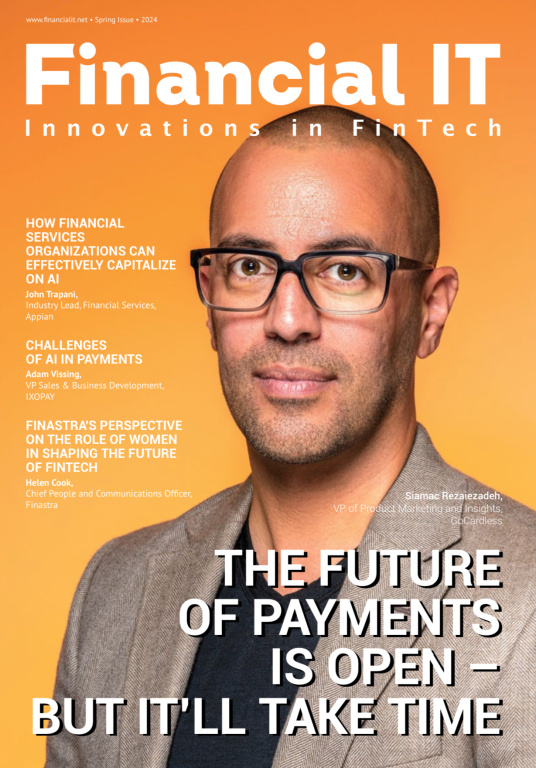A Tactical Choice on Data Integration Can Take You to the Top of the League

- Tom Ainsworth, Head of Customer Engagement at Jitterbit
- 30.04.2021 01:00 pm data
Businesses the world over are still coming to terms with the massive changes to consumer behaviour caused by COVID restrictions. For some, those changes have actually served to underline the importance of the service they provide and might expedite their growth. How can companies better prepare for rapid development like this?
We caught up with Head of Customer Engagement at Jitterbit, Tom Ainsworth, on youth fintech company gohenry, and how accurate data integration is helping them ready themselves for the next stage in their expansion.
Q: Tell us a bit about gohenry and their background.
gohenry is a children’s prepaid debit card and financial education app that was actually conceived by a group of parents while watching their children play in a football match. I know football and finance is a bit of a sticky subject right now, but this is a really positive story. They had identified a need for a simple, meaningful, and real-life solution to kids’ money management in our digital economy and increasingly cashless society. So they created a service that includes a debit card and money management app for children aged 6-18 that, while firmly placing the control in young people's hands, gave parents the visibility to guide kids through their first contact with money.
Since they launched gohenry in 2012, it’s helped over 1.5 million young members become more confident with money—doubling its customer base every year for the past six years. They recently secured investment funding led by U.S. growth-equity firm Edison Partners, with investment from Gaia Capital Partners, Citi Ventures, and Muse Capital, and have been working towards further expansion in the UK and US this year - which is why we initially started talking with the gohenry team.
Q: Have recent events affected growth in any way?
Absolutely—their mission became even more crucial with the onset of the pandemic. The shift towards more contactless payments and school closures driving people online have magnified the need to teach kids how to be good with money in a digital and cashless world. According to gohenry’s recent Youth Economy Report more than half of Gen Alpha and Gen Z spending occurred online last year with ATM withdrawals accounting for just 9% of kids’ spending in 2020. This has increased the urgency of parents to find the necessary financial education tools to teach their kids money management skills, which is reflected by the increase in gohenry member numbers.
Like any company that experiences that kind of demand and rapid growth—even before the pandemic—gohenry needed to take stock of the technologies and integrations it was using. Recent events just made that requirement even more critical.
Data visibility, a commitment to customer service, and differing data regulations across the globe meant the team needed to adopt technology that would allow them to continue to provide high levels of customer experience, while keeping the company agile enough to continue their impressive growth trajectory.
Q. What’s the best approach when your company wants to continue growing and maintain a consistent customer experience?
It’s vital for companies to have a complete 360-degree view of the customer—one that’s comprised of integrated data from every single step of the customer journey. Failure to create this interconnected view is a real blocker on both innovation and agility to meet the needs of a customer base.
That’s the need, but how they answer it is equally as important. When off-the-shelf pre-built templates and tools already exist, companies must avoid constructing their own complex integrations to produce this 360-degree view because it can leave them bogged down in building and management. The team at gohenry selected the self-serve Jitterbit Data Loader tool, which, for a large-scale project like this, was the front-runner thanks to its ease of use, low-code, and fast implementation (three weeks from proof of concept), with predefined components.
Once the data from multiple platforms and tools was cleansed—with 99.9% accuracy—and structured, they moved onto Jitterbit’s Harmony platform to manage and automate the hundreds of integration points within the business. Around 20,000 to 40,000 data updates are made every hour within Jitterbit, so data is continually cleaned – with zero failures—while customer service administrative time has been cut by 17%, lightening the demand on resources.
Ultimately, when businesses are looking to stretch to meet new demands in a way that doesn’t disrupt the offering that attracted customers in the first place, they need the data to be structured and integrated in a way that doesn’t take up their time and that they have absolute confidence in. To go back to the football field for a second, it’s a bit like a team manager preparing for a big game; they don’t analyse the opposition by themselves—they have scouts they trust who do that for them, so they can focus on picking the best team. Jitterbit’s Harmony platform gives the gohenry management team a fully integrated, real-time insight into the business and their customer service teams a 360 degree view of each and every customer. Only with that single and complete perspective can companies like gohenry deliver on their ambitions for growth and ensure customers receive a consistently high-level of service.
‘To see the full Gohenry case study please visit: https://resources.jitterbit.com/finance/gohenry-case-study-graphic?utm_medium=pr&utm_source=fintech-times&utm_campaign=pr-fintech-gohenry-0321


























